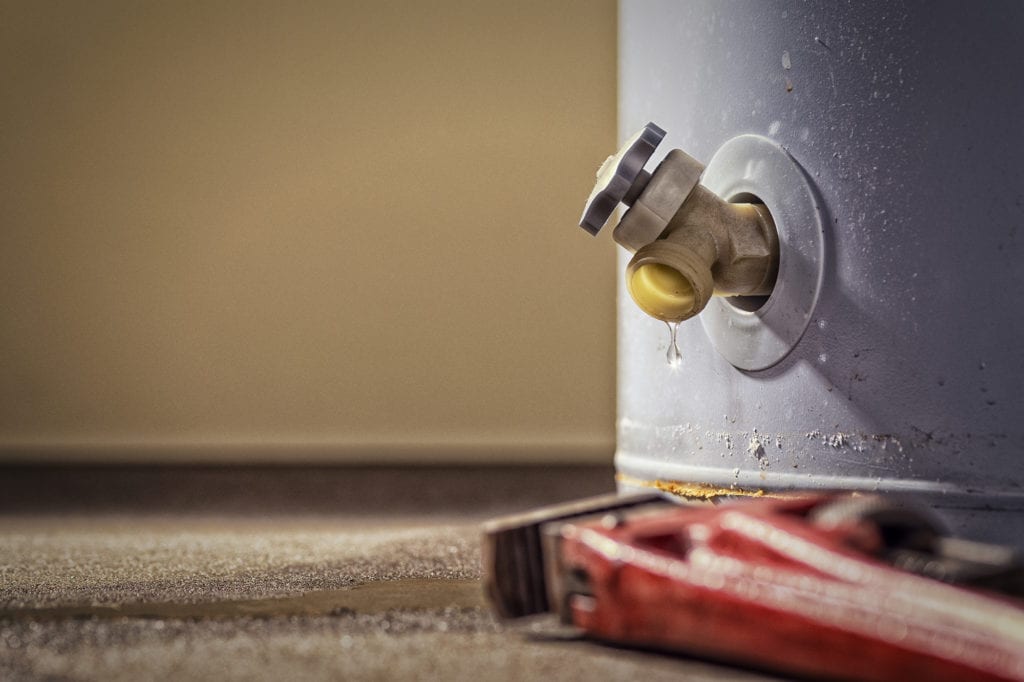Most of us think of our water heater as an out of sight out of mind appliance. In a lot of homes, it resides in the garage, and nobody ever pays attention to it. But our water heater needs some TLC every now and then to maximize its life and performance. New water heaters aren’t cheap. Water heater repairs can be pricey. Water heater failures can cause a lot of damage. In this article, we’ll breakdown some basic maintenance tips, our water heater maintenance guide as you will, to help you get the most out of your home’s water heater.
The Visual Inspection
On average, homes waste up to 10,000 gallons of water from plumbing leaks. In most cases, these leaks are from damaged pipes, but sometimes they come from an old or corroded water heater tank. If your water heater has even a small leak, it can end up costing you a lot in performance and energy bills. At least twice a year, you should perform a visual check on your water heater tank. Check for loose screws, nuts, bolts, and aging gaskets. Look for signs of rust, corrosion, and pooled water under the tank. If anything is loose, you can tighten it yourself.
Water Heater Flush
If your water contains calcium at high levels, you have what is called “hard water.” While hard water is okay to drink, when you heat it up, it leads to scaling within your water heater. Over time the calcium deposits build-up, reduce the efficiency of your heater, and can even lead to damage. One solution to a home with hard water is adding a whole-home water softener and filter. As part of your annual hot water maintenance, you should flush your tank at least once per year. This can help flush out accumulated sediment and debris in the tank.
Pressure Relief Valve Check
All gas and some electric water heaters have a temperature and pressure relief valve. A T&P valve is a type of safety device that releases excess temperature and pressure inside your tank. When the temperature exceeds the set benchmark around 250 F and 150 psi, the valve will open. If this valve does not open, then disaster ensues with an explosion. To start your T&P valve inspection, shut off the gas or electricity first. Position a bucket under the valve to catch the water. Then, pull the valve’s trip lever, and water, vapor, and air should come out. If nothing comes out, then it should be replaced.
Anode Rod Replacement
The anode rod is a device that prevents the inside of the water heater from corroding. It’s a steel tube made of either aluminum, magnesium, or zinc. The rod goes on the top of the water heater and attracts elements in your water heater that cause oxidation. An anode rod, on average, will last from three to five years. Part of your water heater maintenance routine should involve inspecting the anode rod and replacing it every 3 to 5 years.
Need Help with Your Water Heater?
Top of the Line Plumbing provides plumbing services to Duval County, St. Johns County, Atlantic Beach, Jacksonville Beach, Ponte Vedra Beach, and the surrounding areas. There isn’t a plumbing job too big or too small for our team to handle. From repairs and repiping to hydro jetting and water filtration, Top of the Line has the experts to get the job done.
904-647-1221





